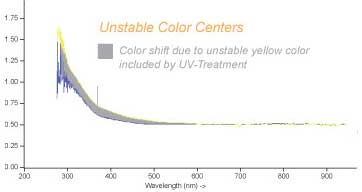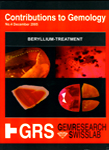Fig.
A3 Different colors produced by
the new treatment (including pink, yellow, orange,
and blue) are sorted for this report. Sapphires of
different colors are accidentally clustered together
by the melting of minerals other than cluster. Note:
Different colors are produced in the same heating
runs. |









